Branch Studio Architects revamps 1960s dream house in Melbourne
This 1960s house in suburban Melbourne has been overhauled by Branch Studio Architects to create a contemporary home for the original owners' granddaughter (+ slideshow).
The local firm was tasked with revamping the dream home of a pair of Jewish refugees – one a survivor of the Auschwitz concentration camp – who had arrived in Australia with little more than the clothes on their backs.
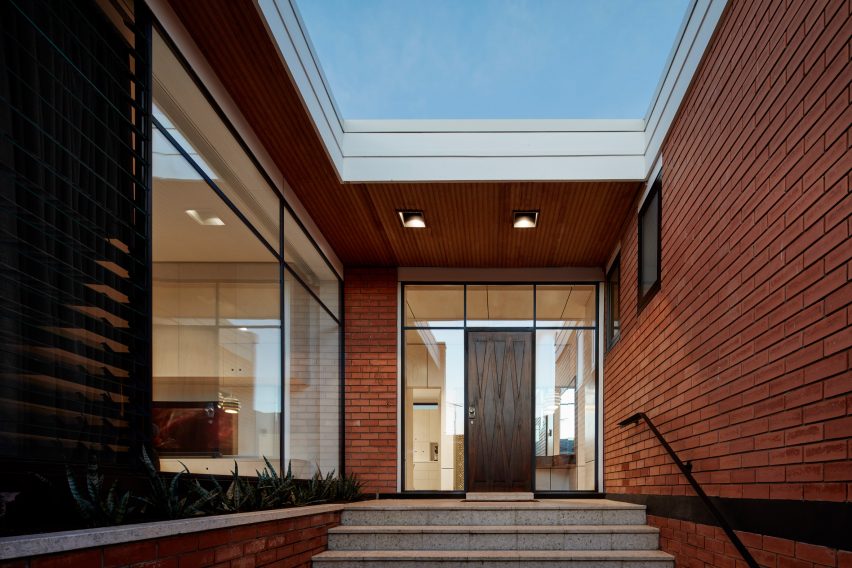
The couple had built the house as soon as they could afford to, and lived in it for the rest of their lives.
After they both died, it was passed down to their granddaughter Danielle and her husband Adam, who works as a writer – hence the project name, Writer's House.
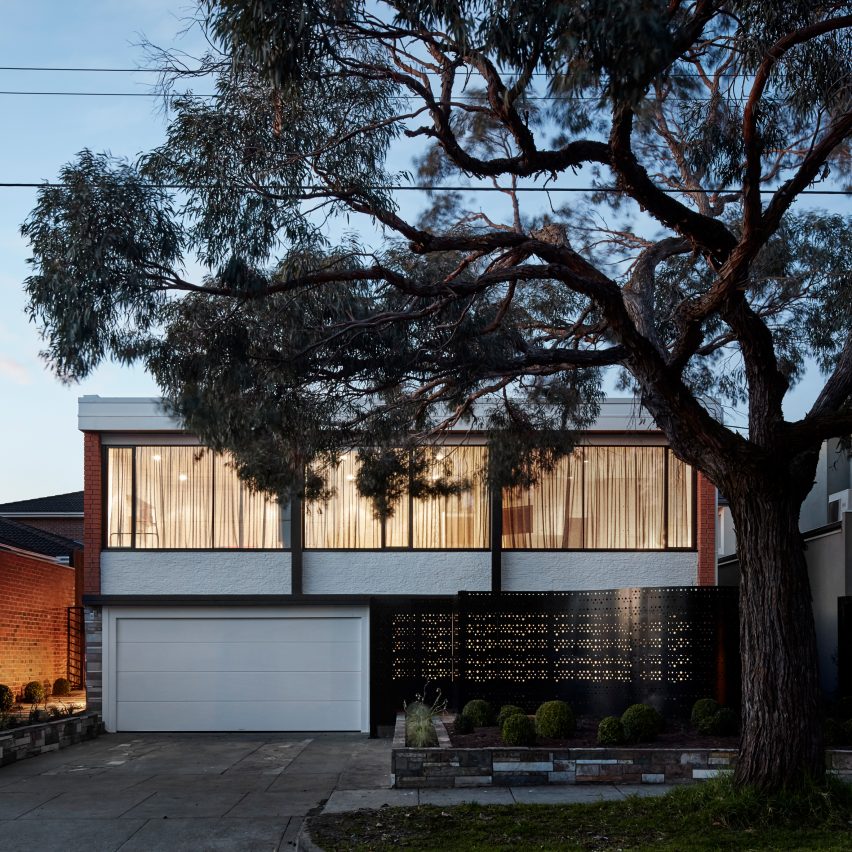
The brief given to Branch Studio co-founder Brad Wray was to restore the house to its former glory without turning it into a "mid-century mausoleum".

"It was our joint intention that whatever new works we did to the house would not impact on the original integrity of the original house and it memories," explained Wray.
"There is often a very fine line between creating a nostalgic 'museum' of something that was and removing all notion of the existing all together," he said.
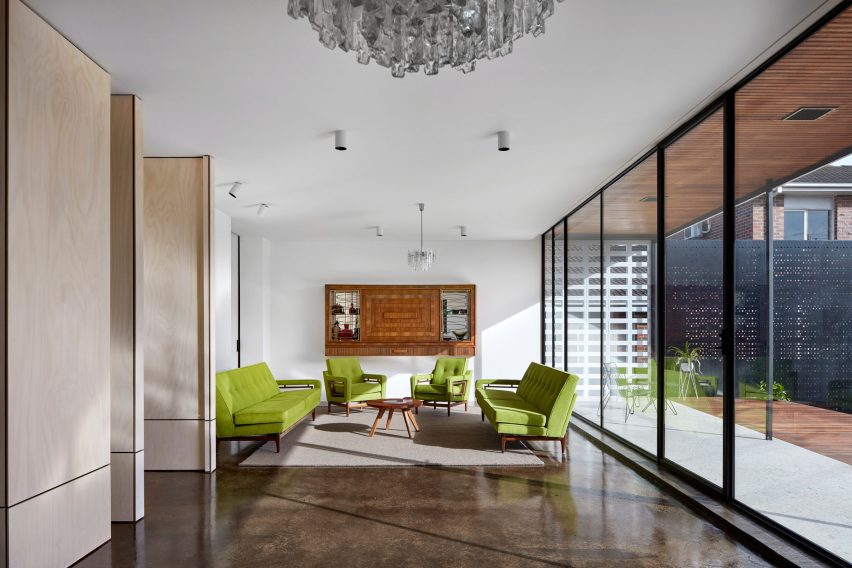
Built in 1968, the two-storey house was designed by emerging designer Michael RE Feldhagen, a protégé of modernist architect Ernest Fooks.
It was one of a number of International Style properties built in the Caulfield area at that time, although many have since been demolished.
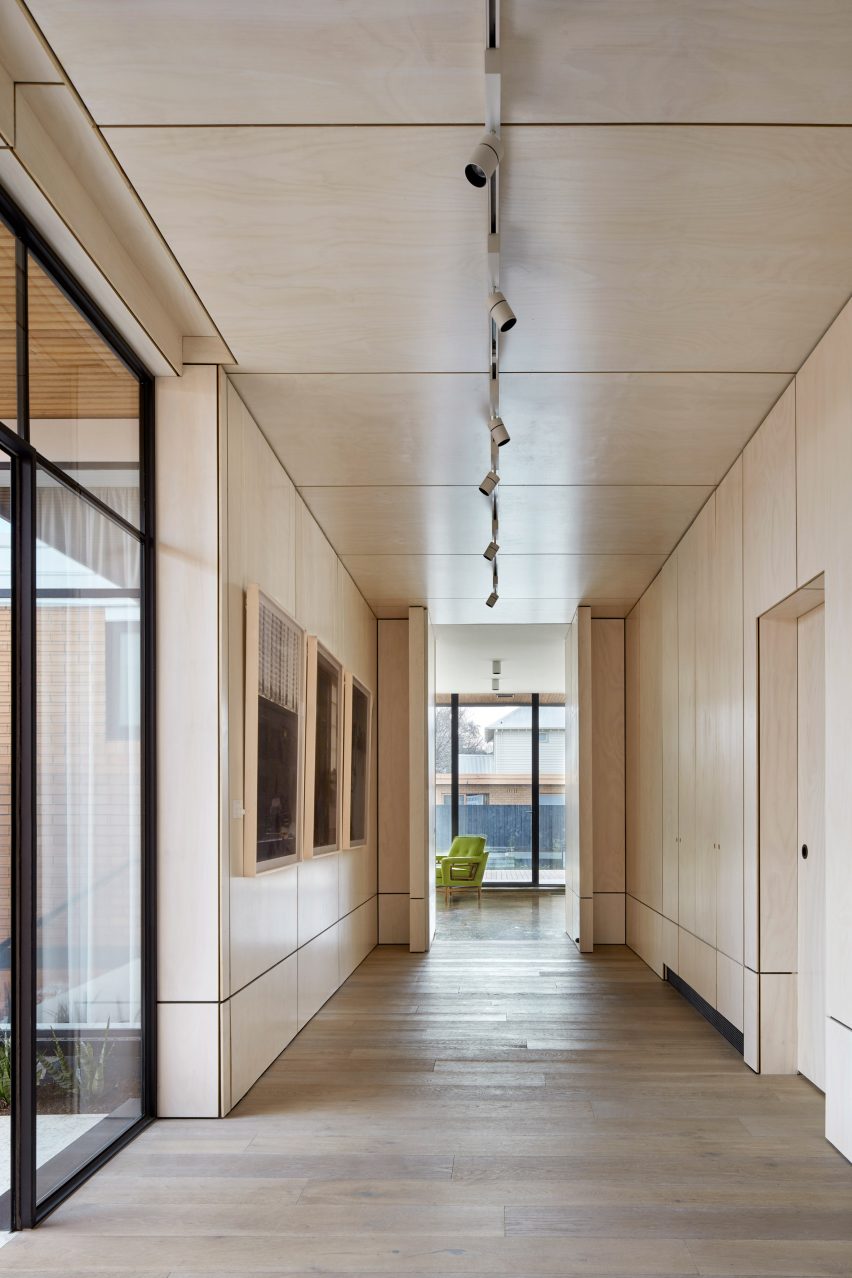
Respecting this, Wray's team chose to leave the building's facade largely unaltered. The only real change was the addition of steel-framed windows, to replace the original wooden ones, and a more minimal white colour scheme.
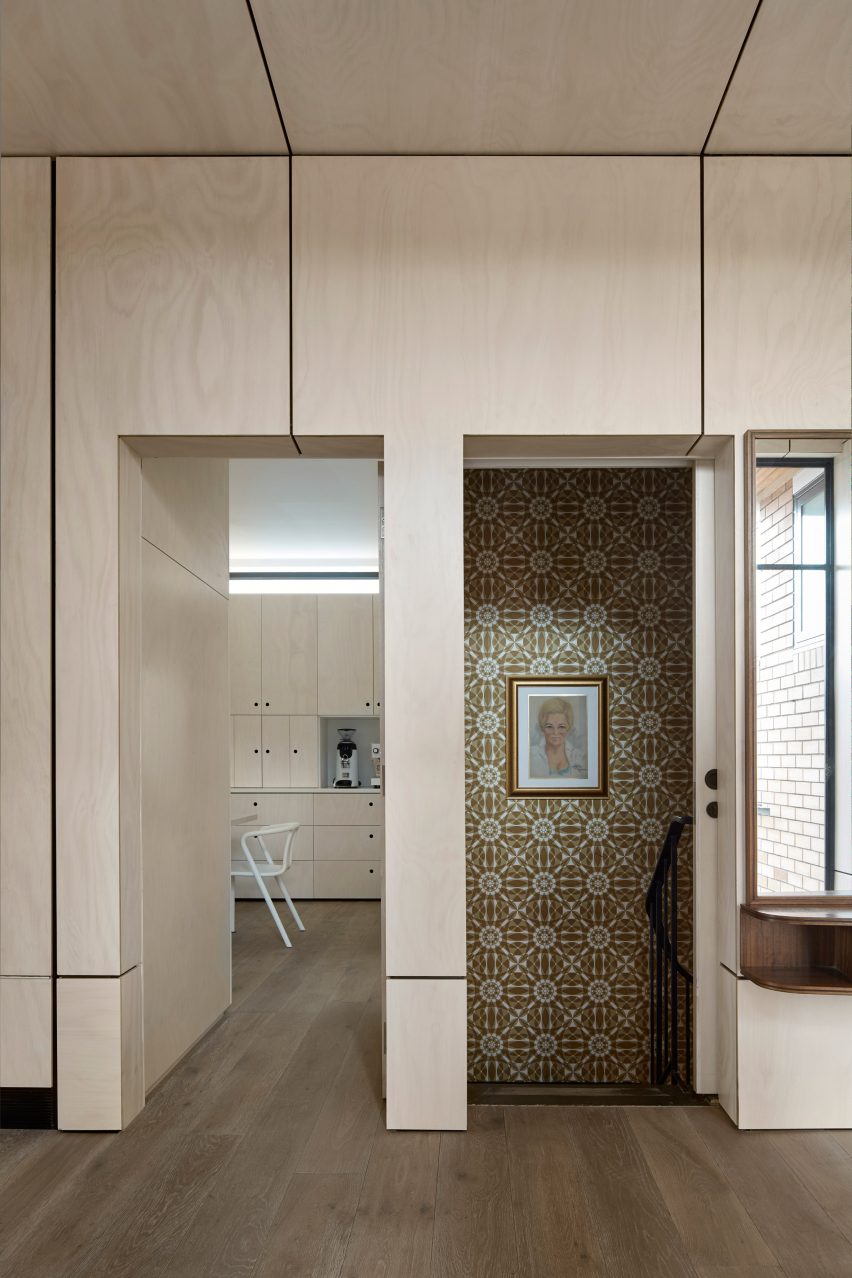
A much bigger change was made at the back of the house, where a new "party deck" has been created. Flanked by perforated aluminium privacy screens, the deck extends the building further into the garden.
"[It] not only solved a practical issue of overlooking, but more importantly was used to extend the internal areas to create a much more flexible internal/external cohesion of space," said Wray.
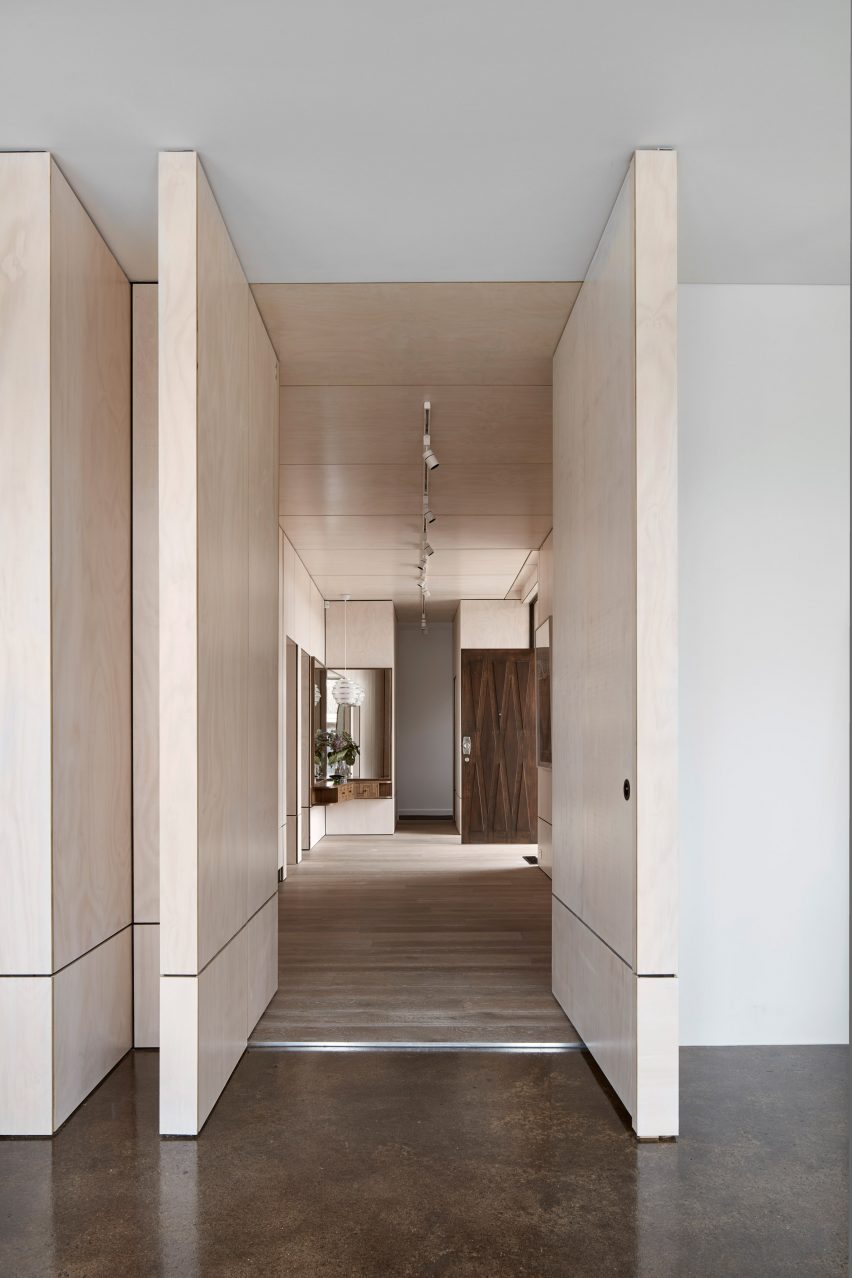
Inside, the house is still filled with the bespoke joinery created by Jacob Rudowsky – a popular local craftsman – shortly after the house was completed.
One of the biggest challenges was designing a contemporary interior without making these restored traditional elements feel out of place. Wray took a risk by choosing to pair them with plywood surfaces and concrete floors.
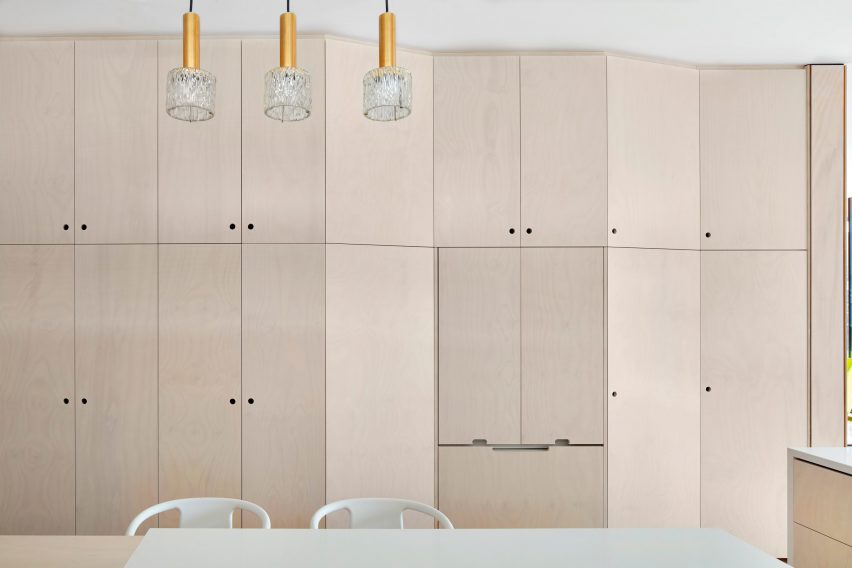
"The hope was that the marriage of raw and refined would be seamless and elegant," said Adam.
"To this end, every room in the double-storey building was totally reimagined, but each space retained hints of the original, Easter eggs pointing to what came before," he added.
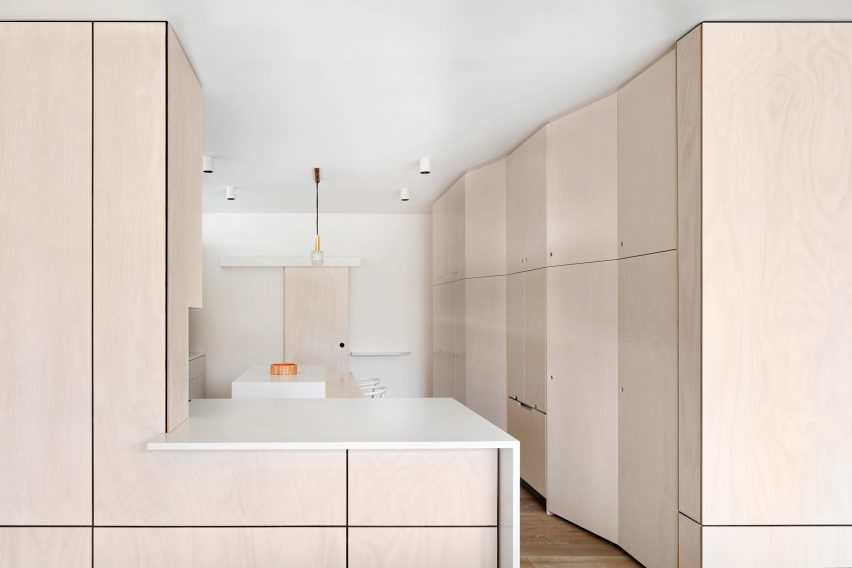
Behind the deck, an assortment of living and dining spaces are organised around a generous plywood-lined foyer, which functions as a gallery for the clients to display their art collection.
The kitchen features contemporary cabinets fronted by lime-washed plywood, while the living space is furnished with old sofas reupholstered in vibrant green fabric.
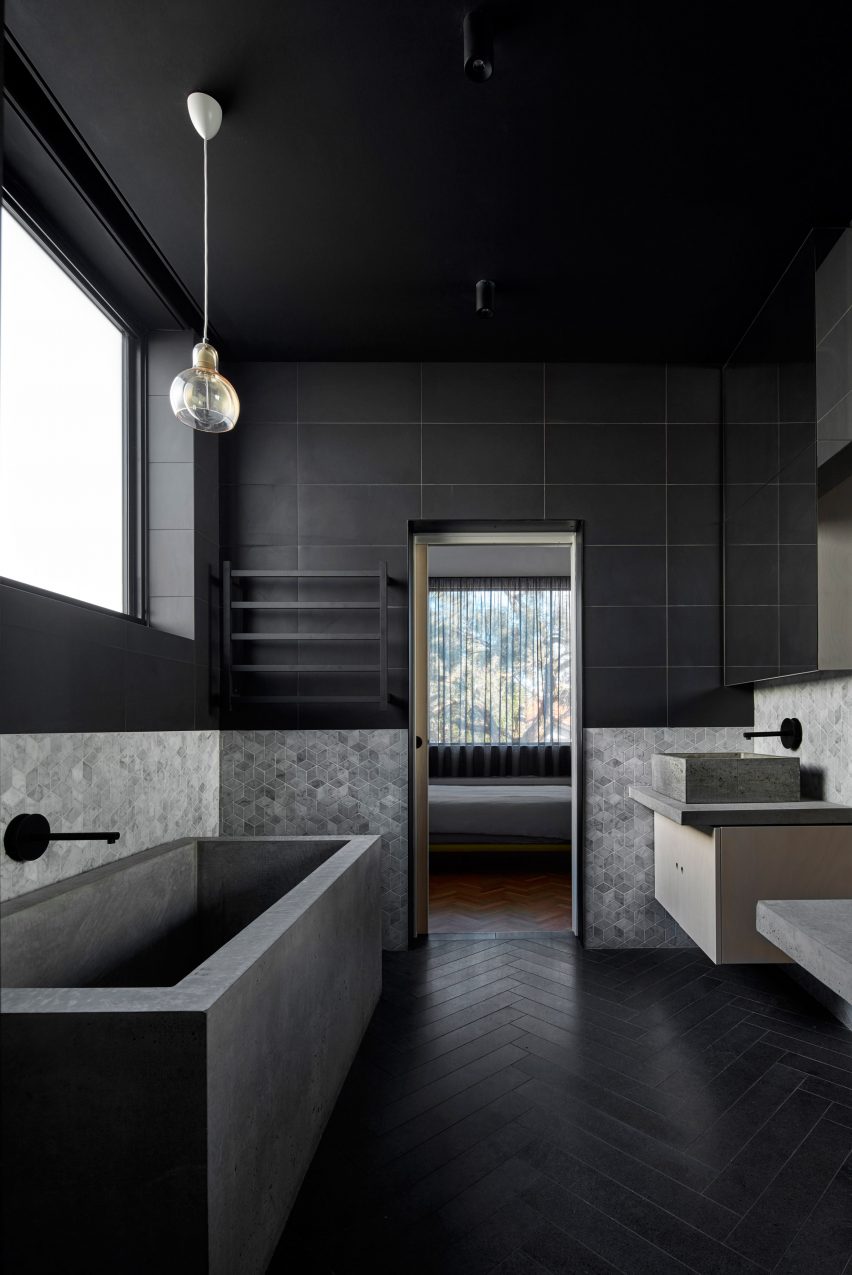
Three bedrooms are located at the opposite end of the house, along with two bathrooms, including one that features a concrete tub and decorative grey tiling.
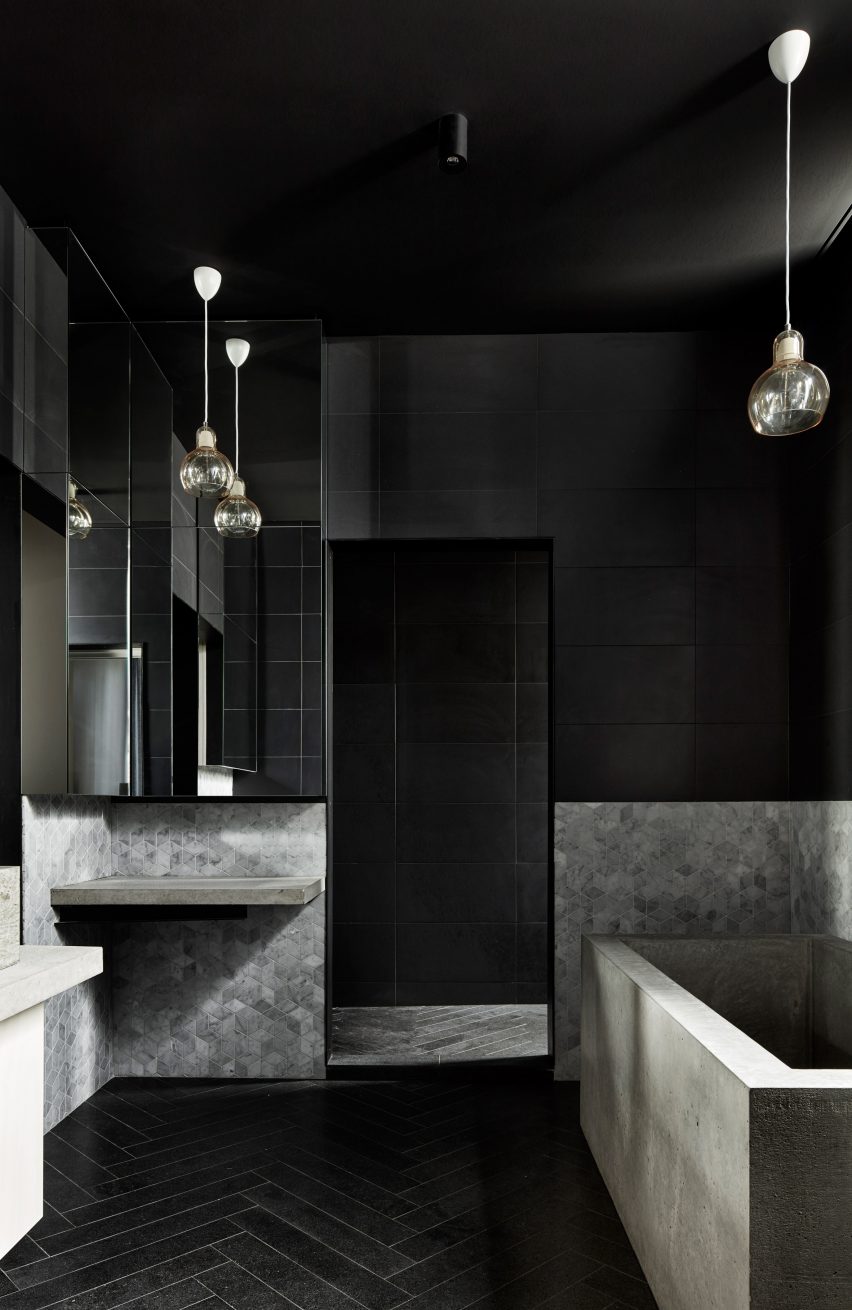
The ground floor contains a wine and whiskey cellar, a garage and a writing studio for Adam.
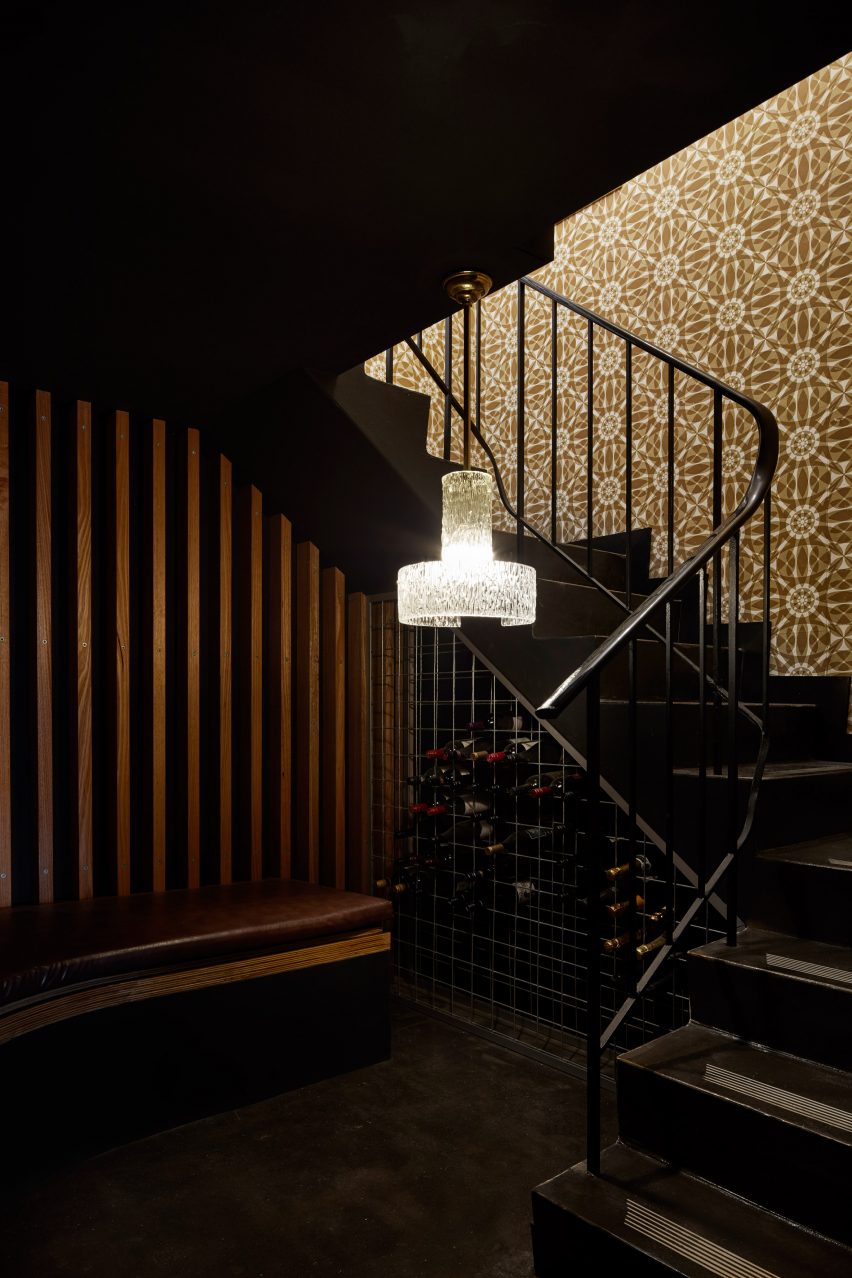
The building is the latest in a series of 1960s renovations, as more new owners start to appreciate the modernist style of architecture. Other recent examples include a refurbished London terrace house and a renovated Ivory Coast villa.
Photography is by Peter Clarke/Latitude Group.
Project credits:
Architect: Branch Studio Architects
Project team:
Brad Wray, Rowena Henry, Simon Dinh
Landscape architect: Plume Studio
Structural engineer: Perrett Simpson Stantin
Original architect: Michael RE Feldhagen
Original furniture: Jakob Rudowski
New dining and coffee tables: Brad Wray Workshop
Rudowski sideboard restorations: Orchard Design
Concrete bath and vanities: Hungry Wolf Studio